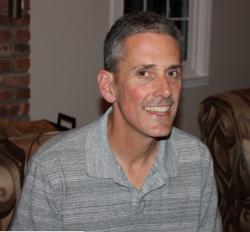By John Furgele
There are many doom and gloomers when it comes to harness racing. Many feel that if it wasn’t for casino money, most harness tracks would be closed. Guess what? Casino dough and harness racing go hand in hand; if it weren’t for harness racing tracks, there wouldn’t be casinos in many states.
Others think there is major horse shortage which will lead to the ultimate demise of the sport, but if that’s the case, how do we explain this? On Oct. 18, a new harness racing track opened — Oak Grove Gaming and Racing (Oak Grove, Kentucky), jointly owned by Churchill Downs Incorporated (CDI) and Keeneland.
Say what you want about the corporate behemoth that is CDI, but if they thought harness racing was a losing proposition, they would not have constructed a new facility. The track will race 12 days in 2019 and at least that many in 2020. The track is 5/8 mile and has some stables for horses to ship in and out of.
Oak Grove Gaming and Racing will be a racino, complete with 1,200 historical racing machines, a five-star hotel, an event center and restaurants. This doesn’t get done without harness racing and the fact that two entities — Churchill and Keeneland (known for thoroughbred racing) — are hooking up with the standardbreds.
It hasn’t been an easy year for horse racing, but upon closer examination, it hasn’t been a bad one either. The recently concluded Breeders’ Cup saw record handle with $174.6 million bet over the two-day gathering at Santa Anita. That topped the previous record set last year.
Harness racing has also had a nice year. As of Nov. 7, total handle is $1.24 billion; up 3.4 percent from last year and that’s with 54 fewer racing days.
Many states are adding sports books and in addition to betting on horses, bettors can wager on all sports. One would think that sports betting would negatively impact horse and harness racing, but so far that hasn’t been the case. In fact, it may be causing more people to plunk down come cash on races. The bettor is already at a track, there’s lots of action to be had, so why not bet on the Patriots and the 5-7 exacta in race 3 at Plainridge?
Oak Grove isn’t offering high purses. Most days, the total purse has been around $50,000 with per race average hovering at $5,000, but bettors have never worried about purses when they look over the form and hedge their bets.
Oak Grove’s calendar is situated in a good spot — two weeks after the conclusion of the Grand Circuit meet at Lexington’s Red Mile. Dates for 2020 have to be submitted to the Kentucky Gaming Commission this month and here’s hoping that the Oak Grove meet will include more racing dates both next year and beyond.
The track is following a Friday-Sunday format — three days over four weeks — with this year’s meet concluding Nov. 10.
Those that follow sports have said that horse racing “has been in decline,” for years, but I beg to differ. In the summer, Saratoga Race Course drew over 1 million people for its 39-day meet; the recently concluded Breeders Crown handled over $6.6 million and a new harness track has opened in the Bluegrass State.
Time will always tell, but right now, harness racing appears to be on the rise, an uptick if you will.

As a kid growing up in the Buffalo suburbs in the 1970s and 80s, the radio was one of John Furgele’s best friends. In the evenings, he used to listen to a show on WBEN radio called “Free Form Sports,” hosted by Buffalo broadcast legend Stan Barron. The show ran weeknights from 6 to 11 pm and featured every kind of sport you could imagine. One minute, Mr. Barron was interviewing a Buffalo Sabres player; the next, he was giving high school field hockey scores.
But there was always one thing that caught John’s ear. During those five hours, Barron would give the results from Western New York’s two harness racing tracks — Buffalo Raceway and Batavia Downs. This is where John learned what exactas, quinellas, trifectas and daily doubles were all about. From then on, he always paid attention to harness racing, and when Niatross (a legendary Western New York horse) hit the scene in 1979, his interest began to blossom.
John believes harness racing is a sport that has the potential to grow and he will explore ways to get that done via marketing, promotion and, above all, the races themselves.
When he’s not watching races, John is busy with his family and his job in sales. Like the pacers and trotters, he does a little running himself and you’ll occasionally find him “going to post” in a local 5K race.


